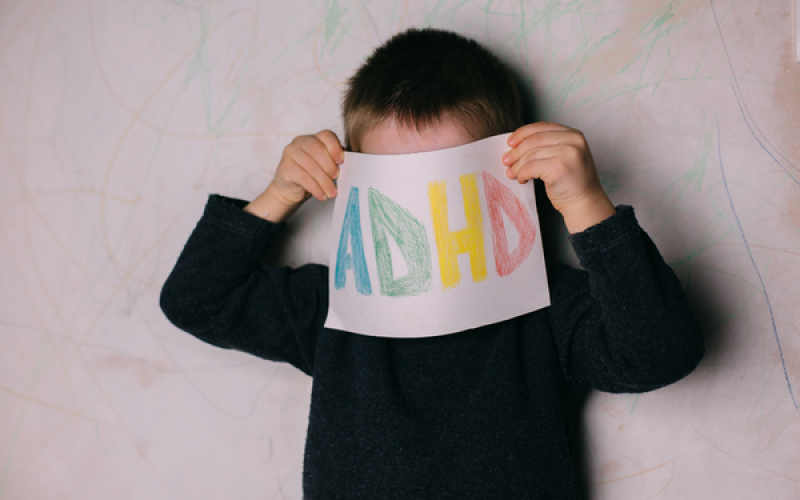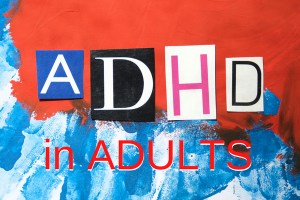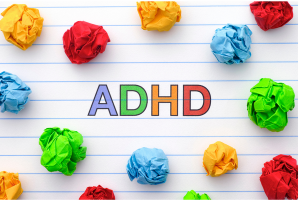ADHD is a developmental disorder and common mental health condition characterised by persistent inattentiveness or restlessness, which can cause significant problems in a person’s life. Such as poor social interaction with others, education or work underachievement, and issues with rules and discipline.
ADHD can occur in people of any intellectual ability, although it’s more common in individuals with learning difficulties. It usually improves with age but can persist into adulthood. Symptoms of ADHD tend to be observed at an early age and may become more noticeable when a child’s circumstances or environment changes, such as when they start nursery or school; 3 to 7 years of age is the typical age range for recognition. However, it is sometimes missed and only identified during senior school or later when life and social pressures increase.
ADHD can occur in people of any intellectual ability, although it’s more common in individuals with learning difficulties. Children’s development is variable, so periods of inattentiveness or restlessness do not mean a child has ADHD. However, suppose parents/caregivers are concerned. In that case, nursery or school teachers or special educational needs coordinators, aka SENCOs, are in a unique position to recognise the early signs and behaviour that differs from most children of the same age. If that’s not an option or the child is being educated otherwise (EO) or in Education Other Than At School (EOTAS), talking with the family doctor should be the first port of all GP.
Did you know?
During childhood, ADHD is more commonly diagnosed in boys; we talk more about why that is later. However, in adults, the ratio evens out to 50-50, with an adult diagnosis more common in the last decade.
Causes and risk factors
The exact cause of ADHD is not fully understood; a combination of factors is thought to be responsible.
- It runs in families; research shows that parents and siblings of someone with ADHD are more likely to have ADHD themselves.
- How ADHD is inherited is complex but not thought to be related to a single genetic reason.
- Research has identified several potential differences in the brains of people with ADHD from those without the condition, although the exact significance is unclear.
Besides genetics, scientists are studying other potential causes and risk factors, including:
- Premature birth; before the 37th week of pregnancy
- Low birth weight
- Maternal smoking, alcohol or recreational drug abuse use during pregnancy
- Brain injury/damage, either in the womb or after a traumatic head injury
- Exposure to environmental risks during pregnancy or at a young age
- Children and young people diagnosed with oppositional defiant disorder or conduct disorder
- Epilepsy
Misconception busting
Research does not support the views that ADHD is caused by overeating sugar, watching too much television, poor parenting, or social and environmental factors such as poverty or family chaos. Of course, these factors and family stress will probably exacerbate symptoms. Still, there is no robust evidence to conclude that they are the leading causes of ADHD.
Symptoms of ADHD in children and teenagers
The early symptoms of ADHD in children and teenagers are usually noticeable before age 6. They are persistent and occur in multiple situations, at home, at school, and in social cases. There are three different ways ADHD presents itself, depending on which types of symptoms are strongest in the individual:
| Predominantly Inattentive | Predominantly Hyperactive-Impulsive |
|
|
| Combined Presentation | |
| Many people with ADHD have problems that fall into both categories equally, but this is not always the case. | |
Around a third of people will only have difficulty concentrating and focusing; this form of ADHD is called attention deficit disorder (ADD).
Did you know
ADHD is under-recognised in girls and women; girls are less likely to be disruptive but more likely to have symptoms of inattentiveness which means they are less likely to be referred for assessment but may receive an incorrectly diagnosed with another mental health or neurodevelopmental condition.


Related conditions in children and teenagers with ADHD
In some cases, other problems or conditions coexist alongside ADHD, such as:
- Learning difficulties such as dyslexia
- Sleep problems
- Anxiety disorders
- Depression
- Oppositional defiant disorder (ODD) – Defined by harmful and disruptive behaviour, particularly towards authority figures, such as parents and teachers.
- Conduct disorder often involves a tendency toward highly antisocial behaviour, such as stealing, fighting, vandalism and harming people or animals.
- Depression
- Autistic spectrum disorder (ASD)
- Dyspraxia – a condition that affects physical co-ordinate
Assessment and diagnosis in children and teenagers
There’s no single or simple test to determine whether someone has ADHD. Many issues have similar symptoms, such as anxiety, depression, sleep problems, and specific learning disabilities. Diagnosis in children depends on a set of strict criteria; a child must have six or more symptoms of inattentiveness or hyperactivity and impulsiveness. Plus, also have the following:
- A symptoms history of at least six months.
- Symptoms started before the age of 12
- Their lives are considerably more problematic socially and academically.
- Symptoms occur in at least two different settings – for example, at home, school, and social environments.
- Other factors, such as developmental disorders or difficult phases, have been ruled out.

Steps to diagnosis
Referral to one of the following specialists is required for a formal evaluation. Who you’re referred to depends on your age and what’s available in your local area; wait times vary greatly and are growing.
- A specialist psychiatrist (child or adult)
- Paediatrician – a specialist in children’s health
- An appropriately qualified healthcare professional with training and expertise in diagnosing ADHD, such as an educational psychologist.
Evaluation usually includes.
- Taking the patient’s history in the case of children’s parents, teachers, and sometimes, the child.
- A medical exam, including hearing and vision tests, to rule out other problems
Plus, a checklist for rating symptoms; you’ll be asked about the following:
- When symptoms started
- Where they occur; at home, school, work social settings.
- Whether the symptoms affect day-to-day life – for example, make socialising difficult.
- Any difficult or traumatic events, such as a death or divorce in the family. In the case of children, these are also known as adverse childhood events or ACEs.
- If there’s a family history of ADHD
- About any other health conditions
- Depending on their age, there will be a series of interviews with the child. Or reports from other significant people, such as parents, partners, parents and teachers, may be needed.
 Other options
Other options
NHS assessment of ADHD is getting more challenging in some parts, with a reported wait time of up to 8 years in some regions of the UK. Seeking an assessment and confirmed diagnosis via a psychiatrist or clinical psychologist; can be faster in some cases, but the wait time can be extended in some areas, and the cost-prohibitive range is between £750 – £2000

Caring for a child with ADHD
Looking after a child with ADHD can be challenging, but it’s important to remember that they are not being deliberately naughty and annoying; they cannot help their behaviour. Some basic day-to-day activities might be more difficult for you and your child, including:
- Getting your child to sleep at night
- Getting ready for school on time
- Listening to and carrying out instructions
- Being organised
- Social occasions
Many parents wonder if they did something to cause their child’s behaviour and report feeling embarrassed about what others think of their child and parenting. Learning about ADHD, how it affects your child, and which parenting approaches work best will help your child flourish and reduce family stress, suggestions; try to focus on just 1 or 2 behaviours at a time.
- Plan the day, use Apps, calendars, alarms, planners, and other tools if they help.
- Set clear boundaries
- Be positive
- Intervene early
- Incentive scheme
- Exercise
- Limiting the amount of daily screen time from TVs, computers, phones, and other electronics
- Getting the recommended amount of sleep each night based on the child’s age
The next post (published tomorrow) discusses ADHD, treatment, medication and support.







